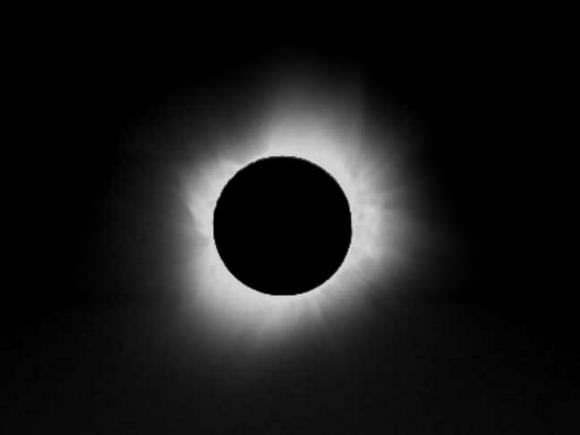[/caption]
Plane of the ecliptic, also known as the ecliptic plane, is a phrase you will often hear in astronomy. A basic definition is that the plane of the ecliptic is the plane of the Earth’s orbit, but that does not mean much to most people. Space is a three-dimensional vacuum, which you can think of as a kind of pool with the planets suspended in it. The Earth orbits the Sun on a particular angle and its orbit is elliptical in shape. The orbit is often shown as an ellipse made of dotted lines with the Sun at its center. If you made this ellipse a solid surface and extended it infinitively, then you would have the plane of the ecliptic. Actually our entire Solar System can be thought of as flat because all of the planets’ orbits are near or on this plane.
The ecliptic plane is used as the main reference when describing the position of other celestial objects in our Solar System. The angle between the plane of the ecliptic and the plane of an orbit is called the inclination. Until it was stripped of its status as a planet, Pluto was the planet with the most extreme inclination – 17°. Mercury is the only other planet with a significant inclination of 7°. There is also a 7° inclination between the plane of the Sun’s equator and the ecliptic plane. There are other celestial bodies that have a much greater inclination than any of the planets, such as Eris with a 44° inclination or Pallas with a 34° inclination.
The ecliptic plane got its name from the fact that a solar eclipse can only happen when the Moon crosses this plane to block out the Sun. Our Moon crosses the ecliptic about twice a month. A solar eclipse occurs when a new Moon crosses the ecliptic, and a lunar eclipse occurs when a full Moon crosses it.
Seasons on Earth are caused by our planet’s axial tilt of 23.5°, which causes variations in the amount of sunlight different parts of the Earth receive. This goes for all the other planets too. For example, Uranus rotates on its side with an axial tilt of 97.8°, which results in extreme variations in its seasons. The eclipse is also home to the constellations of the zodiac. There are twelve constellations in the zodiac, which are important symbols in astrology and can also be found in the Chinese calendar. Here’s a list of all the zodiac symbols.
Universe Today has a number of articles including Virgo one of the zodiac signs and axial tilt.
You should also check out these articles on the ecliptic plane and ecliptic facts for more information.
Do not forget to tune into Astronomy Cast’s episode about the planet’s orbits.
Reference:
NASA: The Path of the Sun, the Ecliptic

